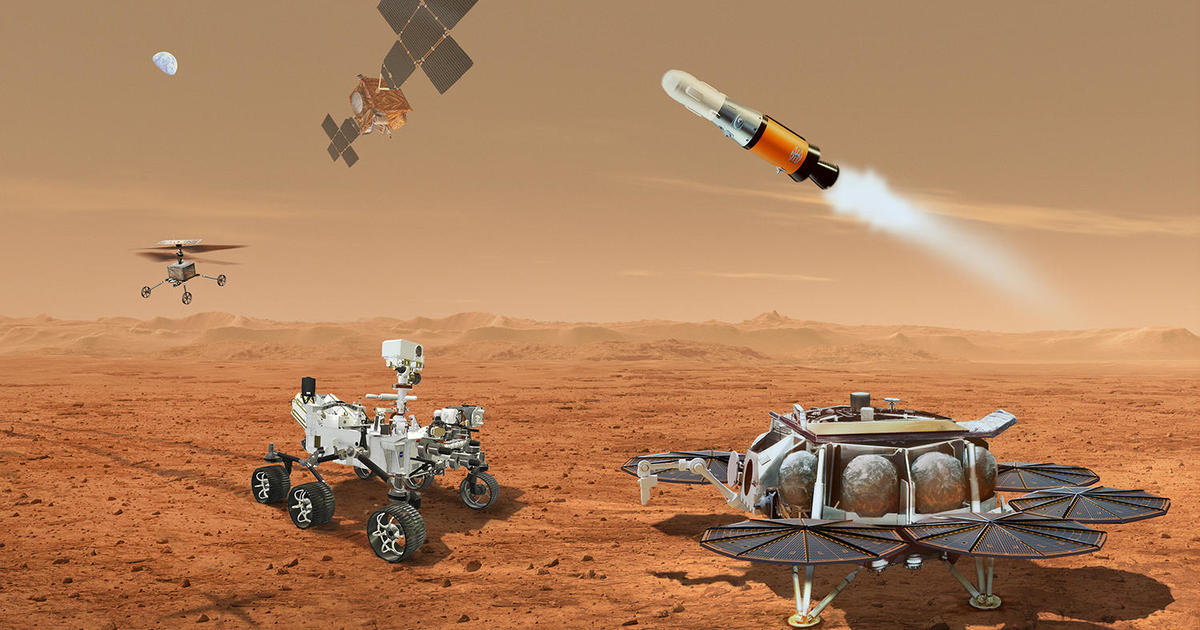Ground equipment glitch delays moon rocket dress rehearsal
NASA called off plans to load its new Space Launch System moon rocket with more than 750,000 gallons of liquid oxygen and hydrogen fuel Sunday because of trouble with launch pad support equipment needed to prevent buildups of hazardous gas. The team plans to try again Monday.
"We're learning about the vehicle, the team is prepared for this," said mission manager Mike Serafin. "We just need to get through a few technical issues. ... I'm confident we're going to get there."
The giant 322-foot-tall SLS rocket was hauled to launch pad 39B at the Kennedy Space Center on March 18 for a dress-rehearsal countdown to clear the way for its maiden blastoff early this summer to send an unpiloted Orion crew capsule on a flight beyond the moon and back.
The countdown started Friday afternoon and reached the T-minus 6-hour point early Sunday when engineers had planned to begin pumping 196,000 gallons liquid oxygen and 537,000 gallons of liquid hydrogen into the rocket's core stage. Another 22,000 gallons of cryogenic oxygen and hydrogen fuel was to be loaded into its upper stage.
Once fully loaded, the team planned two terminal countdown practice runs, one down to about T-minus 33 seconds and another down to less than 10 seconds to test recycle procedures and to make sure the system will be ready for the real thing.
But the countdown was held up before fueling could begin, first to give engineers time to get back on schedule after delays caused by stormy weekend weather. Four lightning strikes were recorded inside the pad perimeter Saturday, including a record cloud-to-ground bolt, but engineers were able to verify the rocket and pad systems were unaffected.
After a two-hour delay for catch-up work, the team was getting ready to begin fueling operations when a fan system used to pressurize the rocket's mobile launch platform went on the blink. The system is used to maintain positive pressure in the platform's compartments, preventing any free hydrogen from building up inside.
Launch director Charlie Blackwell-Thompson said the system was tested before the countdown began and was working as required early Sunday when the primary fan and a backup suffered failures of some sort. She said engineers were at the pad Sunday evening to identify the problem and fix it.
"We do have the balance of this evening and really early into tomorrow morning to resolve this issue," she said. "That's the only real issue that our team is really looking at."
With favorable weather expected, "we'll just kind of hold in place and then we'll come in and do the final preparations for tanking tomorrow," she said. "And it is our intention to begin that operation somewhere around the seven o'clock hour."
If the test cannot be completed Monday, Serafin said there's a chance the team could make another attempt Tuesday but only if the countdown was called off early, limiting the amount of liquid hydrogen used. NASA does not have enough on-site storage to handle back-to-back fuelings.
"We've got Monday in the bag for sure as an attempt," Serafin said. "Tuesday is a definite possibility, but would require some additional coordination. And then after that, we'll just kind of have to play it day by day."
Former shuttle program manager Wayne Hale said he was not surprised problems cropped up during NASA's first attempt to get through a complex countdown with the largest, most powerful rocket the agency has ever built.
"Just the sort of ground system issue that I expected," he tweeted. "Short term delay. First time through these sort of issues are expected."
Equipped with two extended solid-fuel boosters and a core stage powered by four modified space shuttle main engines, the SLS rocket will tip the scales at 5.75 million pounds at liftoff, generating ground-shaking 8.8 million pounds of thrust, 1.3 million pounds more push than NASAs legendary Saturn 5 rocket.
Development of the "mega rocket" is years behind schedule and billion over budget, but NASA hopes to kick start its Artemis moon program by launching the first SLS early this summer, followed by a piloted flight around the moon in 2024. The first in a series of landings by NASA astronauts is planned for the 2025 timeframe or shortly thereafter.





